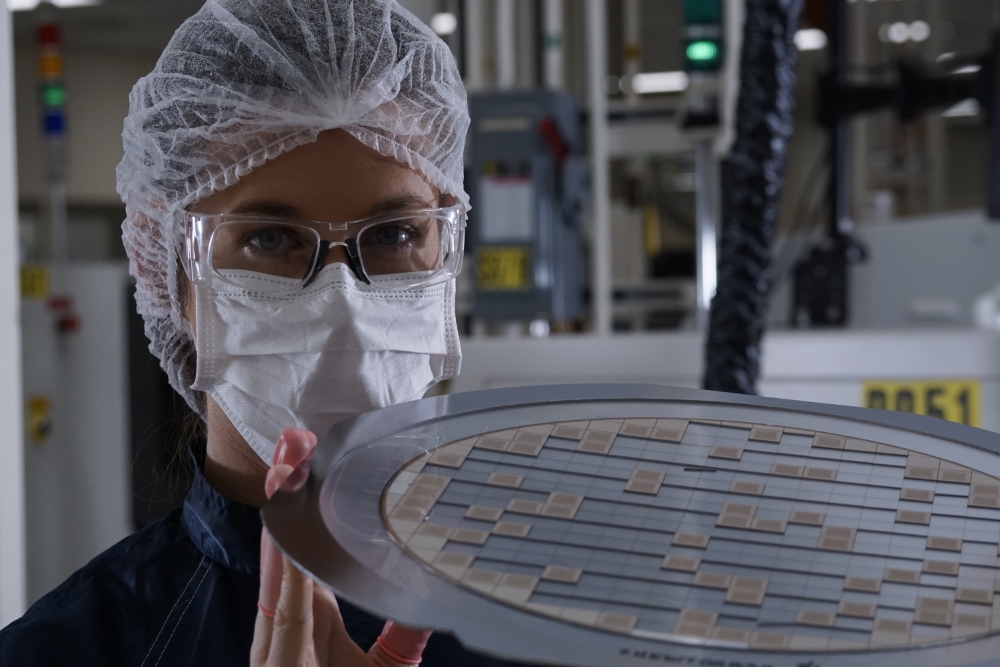Semiconductor investment in the U.S. has been on a rapid upswing since passage of the CHIPS Act and its Advanced Manufacturing Investment Credit in 2022. Analysis from the Semiconductor Industry Association (SIA) in July notes that more than $600 billion has been invested in U.S. semiconductor industry facilities since 2020 — more than 130 projects across 28 states, including nearly two dozen across New York, Pennsylvania, Ohio, Indiana and Michigan.
From semiconductors, packaging and equipment to materials, chip design and R&D the U.S. Great Lakes states are more than well represented in SIA’s tally of recent semiconductor-related projects. Michigan alone claims four advanced materials projects, including $325 million in direct funding for a new facility on Hemlock Semiconductor’s campus in Hemlock for production of hyper-pure semiconductor-grade polysilicon. Advanced materials manufacturer Mersen USA is expanding in Bay City and Greenville, with support from the Michigan Strategic Fund. The $81.2 million project is expected to create 115 jobs in semiconductor and silicon chip materials manufacturing.
In New York, a $32 million CHIPS investment will facilitate Corning’s expansion of its facility in Canton for increased production of High Purity Fused Silica (HPFS) and EXTREME ULE Glass (Ultra Low Expansion Glass). Corning recently expanded two Monroe County sites as well.
CHIPS funding also is facilitating Micron’s 20-year plan to invest roughly $100 billion in its advanced memory semiconductor operations in New York. In Clay, north of Syracuse, Micron New York Semiconductor Manufacturing LLC is constructing two high-volume manufacturing (HVM) fabs of a planned four-fab “megafab” focused on leading-edge DRAM chip production, according to a National Institute of Standards and Technology project summary. “Each fab will have 600,000 square feet of cleanrooms,” it notes, “totaling 2.4 million square feet of cleanroom space across the four facilities — the largest amount of cleanroom space ever announced in the United States and the size of nearly 40 football fields.”
An ‘Energized Ecosystem’
Quebec and Ontario are home to the bulk of Canada’s semiconductor ecosystem with clusters of companies in Bromont, Montreal and Sherbrooke in Québec, and the Toronto metro, Ottawa and Waterloo in Ontario, among other locations.
Twelve semiconductor-related projects in Quebec and five in Ontario were among 20 FABrIC Challenge Projects awarded a combined C$13.4 million in June from Innovation, Science and Economic Development Canada (ISED) Strategic Innovation Fund aimed at improving conditions for investment and increasing Canada’s share of global trade. FABrIC is a five-year, $223 million project to secure Canada’s future in semiconductors.
Quebec companies set for FABrIC funds include Boréas Technologies Inc. and Digitho Technologies in Bromont, Qubic Inc. in Sherbrooke and Axonal Networks Inc. in Montreal. Ontario-based recipients include Edgewater Wireless Systems and PROVA Innovations Ltd. in Ancaste and ISPCI Corp. and MMSENSE Technologies in Waterloo.
“FABrIC will lower barriers faced by Canadian companies to develop semiconductor manufacturing processes, to create semiconductor Internet-connected products and services (IoT), and to export into a global market,” according to its mission statement.
“The Canadian semiconductor ecosystem is energized,” said Lynn McNeil, vice president of FABrIC, announcing the project recipients. “Semiconductors are embedded in almost every aspect of daily life and the sectors that power our economy depend on them,” she continued. “From sensors that detect subtle but significant health changes to complex hardware accelerators and optimized chips that run increasingly complex AI algorithms, semiconductor technology is crucial.
“The semiconductor supply chain is one of the world’s largest and most complicated,” she added. “It draws on highly specialized materials, components, manufacturing equipment, expertise and processes to design, fabricate, assemble, package and test finished chips. Our expertise in photonics, MEMS, compound semiconductors and quantum technology gives Canada the opportunity to be a significant player in this global supply chain.”
FABrIC is about more than supporting individual companies, noted McNeill. “It is creating a strong, collaborative, national semiconductor ecosystem that supports innovation and competitiveness in all the traditional industries the Canadian economy relies on. The projects announced today will see industry and universities work in partnership to develop new products and processes, and to train and develop skilled professionals that industry needs to succeed in competitive markets.”
IBM’S Bromont Boost
In April 2024, IBM, the federal government and the Province of Quebec announced an agreement to invest approximately $187 million to “further develop the assembly, testing and packaging (ATP) capabilities for semiconductor modules to be used across a wide range of applications including telecommunications, high performance computing, automotive, aerospace & defense, computer networks, and generative AI at IBM Canada’s plant in Bromont, Quebec,” according to an IBM release.
“With the demand for compute surging in the age of AI, advanced packaging and chiplet technology is becoming critical for the acceleration of AI workloads,” said IBM Senior Vice President and Director of Research Darío Gil. “As one of the largest chip assembly and testing facilities in North America, IBM’s Bromont facility will play a central role in this future. We are proud to be working with the governments of Canada and Quebec toward those goals and to build a stronger and more balanced semiconductor ecosystem in North America and beyond.”

